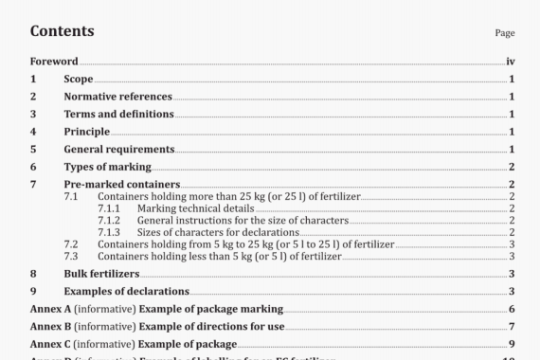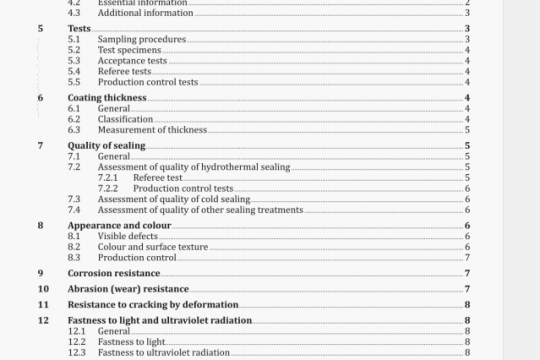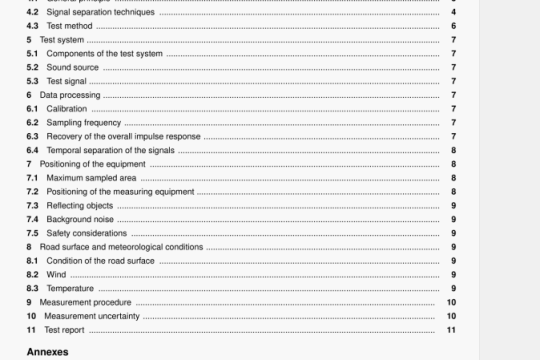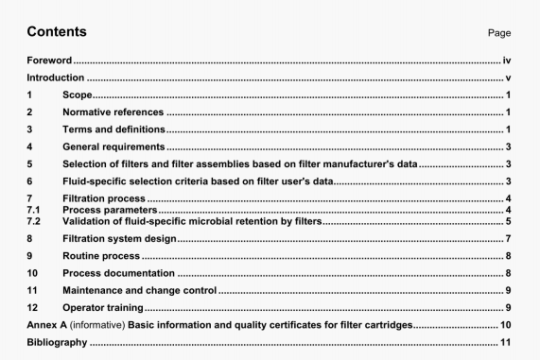ISO 05267-2:2001 pdf download
ISO 05267-2:2001 pdf download.Pulps – Determination of drainability 一Part 2:
“Canadian Standard” freeness method.
4 Principle
Drainage through a fibre mat formed during the test on a perforated screen plate of a given volume of an aqueous pulp suspension into a funnel provided with a bottom and a side orifice. Determination is made of the volume of filtrate discharged from the side orifice. The volume of the discharged filtrate, in millilitres, is the “Canadian Standard” freeness of the pulp.
6 Preparation of sample
As the drainage of a pulp suspension is affected considerably by dissolved solids and the pH of the water used in the determination, standard water in accordance with ISO 14487 shall be used throughout the test.
A sample of an aqueous suspension of the disintegrated pulp shall be taken. If the concentration is not known exactly, the suspension shall be thickened or diluted to approximately 0,32 % by mass using standard water, and the stock concentration determined in accordance with ISO 4119. Then the suspension shall be diluted to a stock concentration of 0,30 % ± 0,01 % by mass and the temperature adjusted to 20,0 °C ± 0,5 °C (see note 3). Throughout the preparation of the sample, care shall be taken to avoid the formation of air bubbles in the suspension.
NOTE 1 With time, an aqueous pulp suspension withdrawn from the stock preparation system or laboratory pulp evaluation equipment can undergo a change in freeness. To avoid the effect of this reversion phenomenon, pulp suspensions subjected to testing more than 30 mm after sampling shall first be treated in the disintegration apparatus for 6 000 revolutions of the propeller at 1 2 % to 1,5 % concentration.
NOTE 2 The test result is sensitive to the quantity of pulp fines, or “crill”, in the suspension. Thickened pulp samples may lose some of this fibre fraction. To avoid such losses during the course of thickening, the filtrate shall be recirculated through the pulp pad until the filtrate is clear and the pulp redispersed by disintegration, as described in note 1. This procedure shall be used to concentrate dilute pulp suspensions to the stock concentration required for the freeness test.
NOTE 3 Where necessary (e.g. process control), a temperature other than 20 °C may be used but it is not in accordance with this part of ISO 5267 and must be reported. The correlation tables presented in this part of ISO 5267 (informative annexes D and E) were developed from groundwood freeness evaluation studies. The accuracy of the correction tables for chemical pulp freeness evaluation has not been determined.
NOTE 4 In some applications, e.g. process control, it may be convenient to accept larger deviations than 0,01 % for stock concentration and ± 0,5 °C for temperature. The volume measured should be corrected with the aid of correction tables given in annexes D and E. The result so obtained does not conform to this part of ISO 5267.
7 Procedure
Clean the funnel and drainage chamber of the “Canadian Standard” freeness apparatus (5.1) thoroughly, and finally rinse with water. Place the drainage chamber in position. Adjust the temperature of the apparatus by rinsing with water at 20,0 °C ± 0,5 °C (see note 3 in clause 6).
Place the measuring cylinder (5.2) or a tared beaker (see note in 5.3) in position to receive the discharge from the side orifice.
Whilst stirring, transfer 1 000 ml ± 5 ml of homogeneous pulp suspension to a clean measuring cylinder.
Close the bottom of the chamber of the freeness tester and open the top lid and the air-cock. Mix the sample by closing the top of the cylinder with the hand and invert the cylinder through 1800 three times, without losing the stock. As much as possible, avoid introducing air into the stock at this stage.
Pour the stock gently but as rapidly as possible into the chamber. At the end of the pouring, the stock should be almost motionless in the chamber. This can be achieved by pouring the stock around the inside of the chamber and finishing the pouring in the centre. Immediately close the top lid and the air-cock and open the bottom lid. Allow 5 s to elapse from the time of opening the bottom lid, then open the air-cock in a single motion to start the flow.
When the discharge from the side orifice has stopped, read the volume of this discharge to the nearest 1 ml for values below 100 ml, to the nearest 2 ml for values between 100 ml and 250 ml, and to the nearest 5 ml for values exceeding 250 ml. For greater accuracy, weigh the tared beaker and its contents to the nearest 0,1 g and convert the mass to volume (ml).
Combine, in a 2 000 ml beaker, the pulp from the chamber, side orifice discharge and bottom orifice discharge and drain the slurry in a sheet machine in accordance with ISO 5269-1 or ISO 5269-2 with a wire, or on a filter paper. For pulps with a high fines content, it is recommended to drain the pulp slurry on a tared filter paper in a Buchner funnel. Oven-dry the pad to a constant weight and record. Use this weight to calculate the stock concentration.




